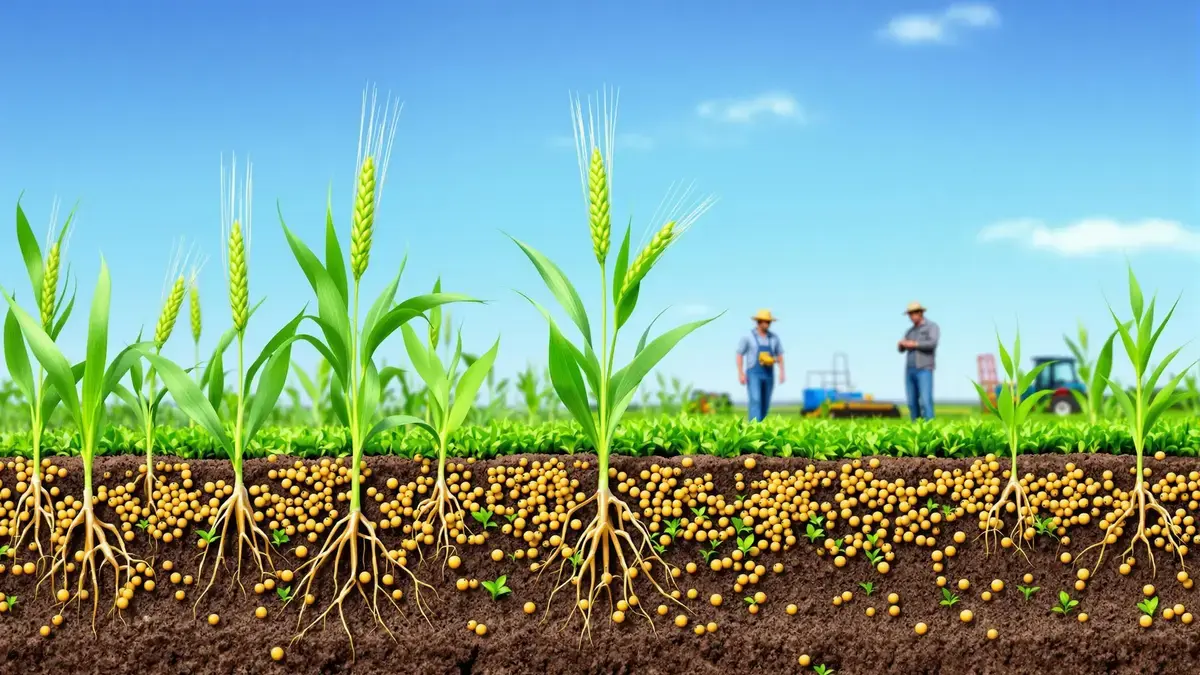A major scientific breakthrough could transform agriculture by significantly reducing the use of chemical fertilizers. This innovation is based on a genetic mutation, CNGC15, which promotes an improved symbiosis between plants and microbes. By optimizing the absorption of nutrients, this mutation promises positive impacts on productivity while preserving environmental resources. Issues of sustainability and conservation are thus at the heart of this agricultural revolution.
Key Information
- A genetic mutation promises a revolution in agriculture.
- Reduction of chemical fertilizers and preservation of resources.
- Improvement of symbiosis between plants and microbes.
- Positive impacts on productivity and environmental sustainability.
A Genetic Mutation Could Revolutionize Agriculture
A recent discovery highlights a genetic mutation that could transform the agricultural landscape as we know it. This mutation, named CNGC15, offers a new perspective on how plants interact with their environment, paving the way for a significant reduction in the use of chemical fertilizers.
Agricultural Dependence on Fertilizers Pollutes Soils and Waters
Currently, agriculture faces major challenges related to excessive dependence on chemical fertilizers. While these products are effective in increasing yields, they often contribute to the pollution of soils and waters. By adopting agricultural practices based on sustainable solutions, it is possible to reduce this harmful environmental impact.
Improved Symbiosis Between Plants and Microbes Thanks to the CNGC15 Mutation
The CNGC15 mutation allows for an improved symbiosis between plants and soil microbes. This natural strategy proves essential for optimizing nutrient absorption by plants. The interactions between plant roots and microbes, such as rhizobia bacteria and mycorrhizal fungi, are strengthened, thus contributing to better crop health.
Positive Productivity Impacts without Synthetic Fertilizers
Preliminary results show positive impacts on crop productivity, even in the absence of synthetic fertilizers. This discovery could therefore provide a viable alternative for farmers looking to maintain high yields without exacerbating the environmental issues they face.
Crucial Environmental Issues: Sustainability and Resource Preservation
The environmental issues associated with the use of chemical fertilizers are becoming increasingly pressing. The quest for robustness and the preservation of natural resources has become a priority in the context of modern agriculture. The CNGC15 mutation appears to align agronomic interests with ecological imperatives.
Examples of Affected Crops: Wheat and Legumes
Initial studies have primarily focused on crops such as wheat and legumes. These plants are essential for global food security, and their improvement could have considerable beneficial impacts for farmers and the environment.
The Mutation Improves Calcium Signaling in Roots
One of the underlying mechanisms of this mutation involves an enhancement of calcium signaling in plant roots. These signals play a crucial role in the communication between plants and microbes, facilitating beneficial interactions that increase crop resilience to environmental stresses.
Balance Between Beneficial Effects and Limitations of Fertilizers
It is interesting to note that, while the CNGC15 mutation presents significant beneficial effects, it should not be viewed in isolation. The balance between positive effects and the limitations of fertilizers remains a key factor to consider for a successful transition to less intensive agriculture.
Adaptation Strategy to Reconcile Yield Increases and Sustainability
The need for an adaptation strategy is evident. Farmers must reconcile yield increases with sustainable practices. The integration of the CNGC15 mutation could play a central role in this adaptation, guiding initiatives towards more ecological farming methods.
Possibility of Conventional Breeding to Incorporate This Mutation
The prospect of conventional breeding to incorporate this mutation into cultivated varieties represents a promising opportunity. This would allow farmers to access improved crops while maintaining traditional farming practices and avoiding the risks associated with GMOs.
Perspectives for Other Crops and Assessment of Soil Effects
The application prospects of this mutation do not stop at wheat and legumes. Other crops could also benefit from this scientific advancement, and a thorough assessment of the effects on soils will be necessary to optimize these new practices and ensure the long-term health of agricultural ecosystems.
Transition to Less Intensive and More Ecological Agriculture
Finally, this mutation paves the way for a true transition between modern agricultural practices and more environmentally respectful methods. By adopting innovative solutions like CNGC15, farmers can envision a future where productivity aligns with sustainability, preserving resources for future generations.
















